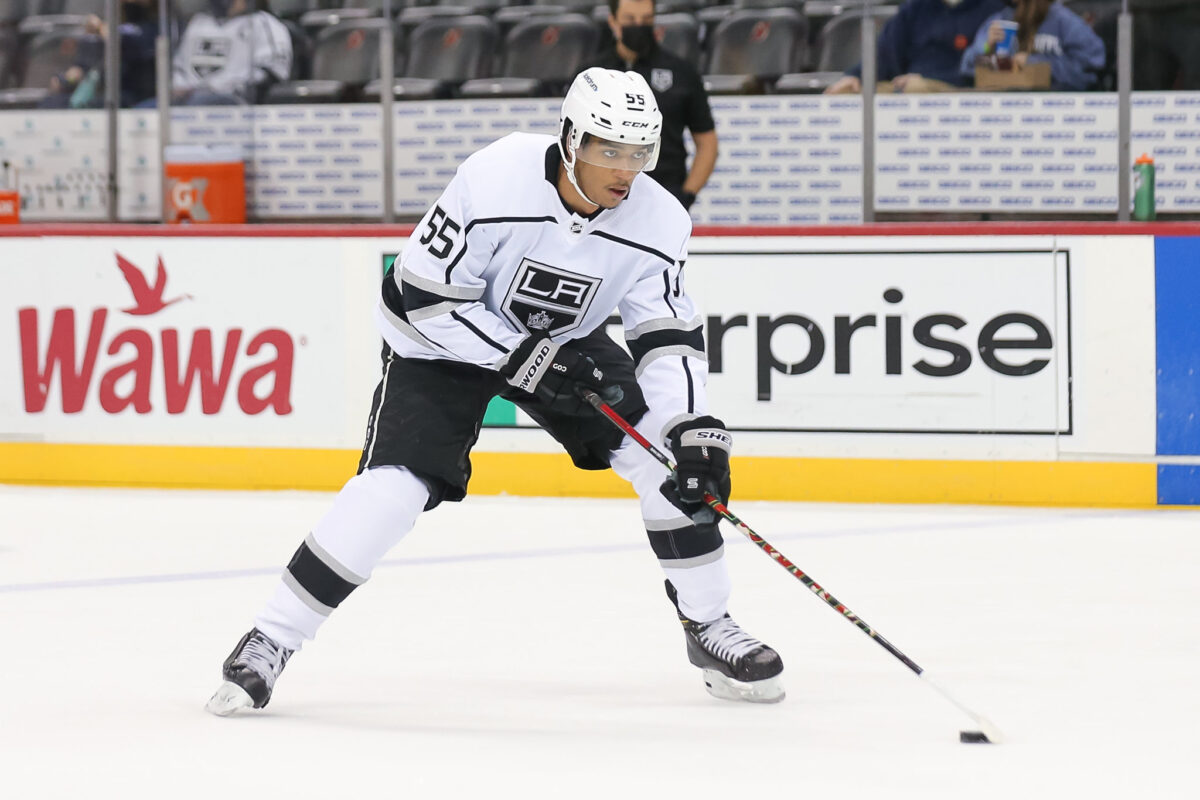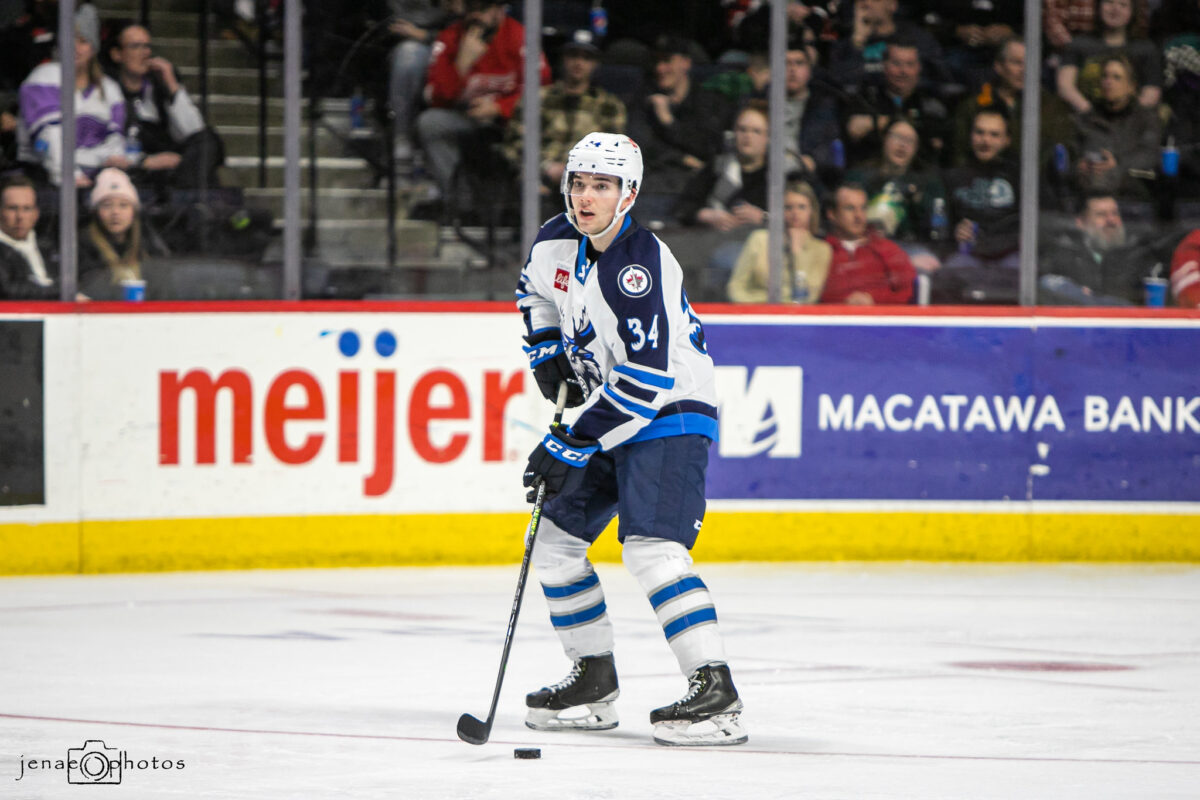The Winnipeg Jets are at the centre of the hockey universe as trade talks about their “core four” continue to dominate headlines. General manager Kevin Cheveldayoff has always been lackadaisical when it comes to making moves unless he absolutely has to. That being said, when he does trade, he tends to get a solid return. Andrew Copp fetched a large haul while the Jets received a solid return and avoided Jacob Trouba’s albatross 8-year, $8 million average annual value (AAV) contract in previous deals.
Pierre-Luc Dubois seems to be going down a very similar path, the only difference being that there seems to be a bidding war for Dubois’ services, which will drive up the price, compared to Trouba, who was dead set on New York (from ‘Jacob Trouba already sounds ready for Rangers long-term commitment,’ New York Post, June 18, 2019). This is where the Los Angeles Kings become a much more attractive trading partner for the Jets than the Montreal Canadiens.
The Canadiens don’t seem too eager to move Kirby Dach or their 5th-overall pick for Dubois. The Kings can offer a player very similar to Dach in Gabriel Vilardi or former second-overall pick Quinton Byfield. If the Jets want to come out of the Dubois trade optimistic, they must get one of Vilardi or Byfield as a part of the return.
The Main Piece Back
Two-Way Forward That’s Desperately Needed in the Top-Six
Vilardi finally hit his groove with the Kings this past season, playing a middle-six role (eighth in forward ice time per game). He scored at a 30-goal and 53-point pace (per a full 82-game season) in 63 games. He showcased his slick playmaking skills that got him drafted so highly in 2017 while also demonstrating a sneaky ability to finish, scoring 23 goals. He doesn’t play a brute force power forward type game but is very good at using his 6-foot-3, 216-pound frame to excel in the cycle game and protect the puck from defenders. This skillset would give the Jets a solid mix of passing, finishing and cycle ability in their top-six.
Related: Winnipeg Jets: 5 Pierre-Luc Dubois Mock Trades
Vilardi also comes with a lot of question marks, which is one of the reasons he’s likely available in a potential Dubois trade. The Kings’ cap crunch requires them to spend every dollar wisely, and his inability to stay healthy is one reason he could be moved. He played the most games of his career this past season, but still missed 20, and Kings general manager Rob Blake said Vilardi still needs to stay healthy all season in regard to a contract extension. The fears of another injury, combined with the chance of the 2022-23 season being a one-off for Vilardi have put a slimmer of doubt on the future of his tenure in LA.
However, Vilardi shines in his two-way play and his ability to draw penalties. He was one of the very best defensive forwards this past season (as shown in the tweet above). While some of this can be attributed to playing an easier middle-six role, Vilardi spent over 19 games on the top line with Anze Kopitar and Adrian Kempe controlling play. Even if his two-way play drops from an elite level to very good in the Jets’ top-six next season, the added offence from increased ice time would still make his improved play a net positive.
He was also brilliant in penalty differential last season, drawing 18 more minor penalties than he took. Lastly, Vilardi mostly played on the wing, but he is a natural centre who spent the first-round series against the Edmonton Oilers playing in the middle and winning 22 of 47 face-offs. Given the opportunity to develop properly, he can be one of Winnipeg’s top-six centres for the next decade.
Banking on Elite Upside
Byfield is a true power forward who can play with skill just as well as he can with power. He is a riskier player than Vilardi, but if he pans out, the Jets could have their new first-line centre for the next 12-15 years. Byfield had all the tools to be successful last season, but the scoring just didn’t come for the 20-year-old Ontario native. His two-way game was productive, controlling 53% of scoring chances and 62% of the actual goals scored when he was on the ice at even strength.

The problem was he shot an abysmal 4.4%, one of the lowest marks in the league among forwards. his shooting percentage will not be that low with more ice time, and he could pop into a star. It is very common for players to break out in the final year of their entry-level contract. A better shooting percentage combined with two to three more minutes of ice time and Byfield could put up second-line centre numbers as a 21-year-old next season.
Secondary Pieces
Cap Logistics to Make the Move Work
To make this all work from LA’s perspective, they will have to unload one of their $4 million depth scorers, meaning either Alex Iafallo or Victor Arvidsson would likely have to be included in this trade. The Jets would get a win-now asset that, worst case scenario, can be flipped at the trade deadline if Winnipeg bottoms out next season.
Arvidsson is a second-line-winger who is elite on the power play, scoring 25 of 59 points with the man advantage, which is crazy considering he was on the second power-play unit for most of the season. He was also sixth in the NHL in power-play points per ice time last season. He is great at drawing penalties, with 11 fewer minor penalties than he drew. He is also very involved in the game when he plays, with only eight of those 59 points being secondary assists, meaning if Arvidsson is scoring points, it’s most likely because he is directly involved in the scoring chance created. The one negative that I could nitpick is his average 5-on-5 scoring; however, on a per-ice-time basis, he would have been fifth in this statistic among Jets forwards, so he would still be a massive upgrade to their forward core.
Iafallo is a career middle-six winger who was better than Arvidsson at even strength last season but not nearly as good on the power play. He scored 36 points in 59 games, which is a 50-point pace over a full 82-game season. He is a well-liked player in the locker room and among coaches. He can be a prominent player playing on the top line or in the top nine while also playing both special teams units. Iafallo is a perfect 7th forward on a Cup-contending team and would most likely be a complementary scorer if he gets traded to the Jets.
Right-Handed Defensive Depth
When the Jets lost Jonathan Kovacevic to the Canadiens via waivers, it severely hampered their depth on the right side. Winnipeg now has Dylan Demelo (a great top-four shutdown defenseman), Neal Pionk (the worst player analytically on the team) and Nate Schmidt (a number 4 or 5 defenseman getting paid like a top-pairing defenseman), meaning if the Jets are ever going to try to get rid of Pionk or Schmidt, they need more NHL ready defensemen.
Jordan Spence is a right-handed Ville Heinola – I can already see the eye rolls. On paper, Heinola has dominated the American Hockey League and has the skills to be an everyday NHLer. The only problem is the Jets have constantly meddled with his development. They have forced him to spend weeks, if not months, in the press box only to throw him to the wolves when they do play him and then send him back to the minors.

Spence would be a great chance for Jets management to learn from their mistakes with Heinola and hopefully develop him into a complementary defenseman who can play top-four minutes with a shutdown partner like Dylan Samberg. Spence also has the potential to be a power-play quarterback, given how well he can process the game. He is a modern-day player, and this type of defenseman is becoming more and more necessary in a skill-based league.
Kings are the Ideal Partner for the Jets
The Kings have everything to offer to fill the Jets’ needs. A trade between the two centred around Dubois could see the Kings capitalize on Kopitar and Drew Doughty’s last Stanley Cup opportunity. For the Jets, this trade could fill needs in three different areas, ranging from, but not limited to, a young future top-six centre, win-now players and added depth on the back end. Cheveldayoff breaking even in the Dubois trade is paramount to any team success over the next handful of years, and I think the best opportunity to do that is to deal with the Kings.
All possession, penalty differential, shooting percentage, secondary assists and points per 60 statistics are from Money Puck Player Statistics
All most common line-mates and ice time statistics are from Money Puck Line Statistics
